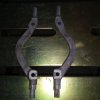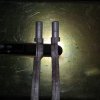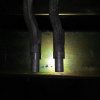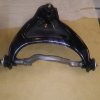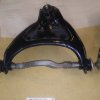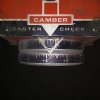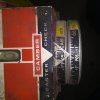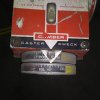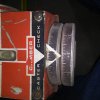I had am idea the other day while trying to figure out how to get more caster on My 63. I am going to see how this works, so all comments/criticisms are welcome.
I turned down an upper control arm shaft in order to move the control arm more rearward. I took off about 3/8". Looks like there will be enough clearance on the frame. I am going to try and make a jig to check how this compares measurement wise to shimming the control arm. It may or may not provide enough of a change to make the effort worth while. We'll see. I'm not seeing where there would be a strength issue, but please let me know what I might be missing.
I will cut the machined piece down to original length and add spacers on the rear if the shaft.

I turned down an upper control arm shaft in order to move the control arm more rearward. I took off about 3/8". Looks like there will be enough clearance on the frame. I am going to try and make a jig to check how this compares measurement wise to shimming the control arm. It may or may not provide enough of a change to make the effort worth while. We'll see. I'm not seeing where there would be a strength issue, but please let me know what I might be missing.
I will cut the machined piece down to original length and add spacers on the rear if the shaft.




